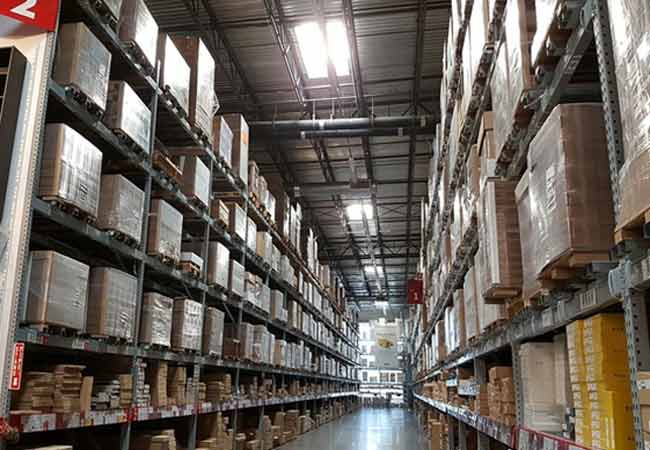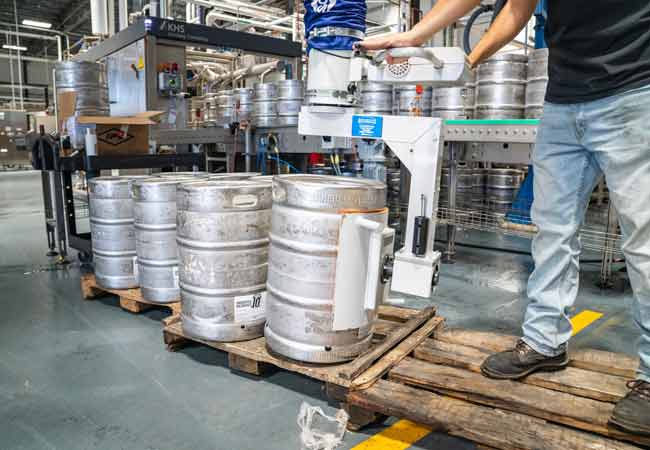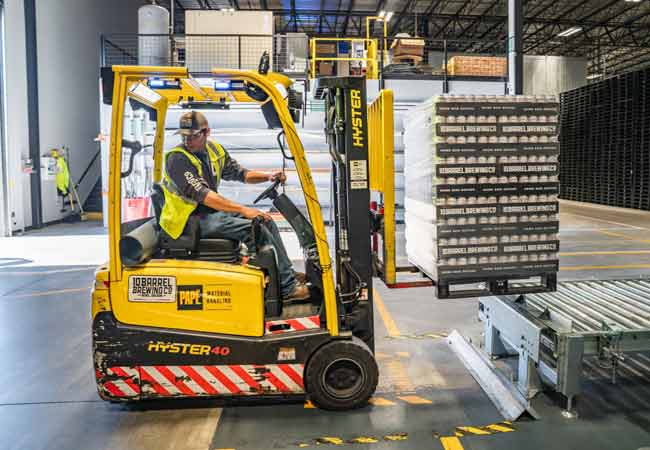Consider it like it was a three-car garage. If all three cars are put into the three-car garage, then you won’t have any room for your yard tools, snow blowers, and lawn mowers, and you will need to move one of your cars out to fit them all. When it comes to distribution centers, the same thing occurs. If it is crammed full, you will usually be moving inventory around which will take up additional labor and valuable time.
Why are distribution centers running out of space?
Warehouses run out of room for several different reasons. Some of them are good problems to have but others are problems with inventory.
Products are hot and selling. Business is booming. People are quickly buying your products, so you need to have more.
The purchasing department might overbuy certain items. When planning a distribution center, you might decide you just need two months’ worth of inventory, but then your purchasing department gets an amazing deal on something and purchases six months’ worth instead. Now, where are you going to put it all?
Another reason is dead or obsolete inventory. This is inventory that isn’t moving and you have had it for several seasons. If your products are full of dust, then it’s been sitting around for far too long. It needs to either be destroyed and taken out of your building or moved to a less congested picking area.
How To Maximize Your Warehouse Space Utilization
1. Determine Whether Or Not Your Racks can Be Extended Up Vertically

Usually, the easiest way to generate more space is to extend your racks up. Typically, new buildings will have ESFR. That is a fire suppression sprinkler system and your inventory can be stored within 18 inches of this area. Rack extension does have some pitfalls associated with it – the base plates or racking uprights might not be on the right side. In that case, a PE and structural engineer can confirm whether rack extensions are a viable option or not.
2. Consider Getting A Mezzanine Installed Over Your Floor-Level Process
Adding a mezzanine is one of the better ways of increasing space. Installing a mezzanine over a floor-level process, such as a receiving or shipping area, can practically double your floor space.
There are, of course, downsides with mezzanines also. The floor loading needs to have the ability to handle it. There are base plates and column that will drop down to the floor now that can be in the way of whatever the process is that is under it, but it can be a lot better to add on a mezzanine if it’s possible rather than expanding the building.
3. Decrease The Aisle Width In Your Racking Area

The width of the aisles can range from 10 up to 12 feet, but they may be decreased by five down to eight feet, which can save 15 to 20 percent of space in an area.
When you consider this option, you must evaluate lift equipment. Is the equipment able to work or follow narrow aisles? Also, there is the additional expense of having wire guidance in very narrow aisles.
4. Evaluate And Make Changes to Your Medium Of Storage
Another option to consider is changing the storage medium you use to higher-density equipment. For example, switch to double-deep racks from single-deep racks.
A double-deep rack with wire shelving needs a reach truck for loading pallets. Drive-in or push-back racks are higher-density equipment options as well. Those options are excellent for additional storage, however, the problem is first in, first out (FIFO). Higher density will limit your access to FIFO pallets.
Recommended Article:
- “Excavating” Finds_ 5 of the Weirdest things found during Construction Digs
- Avoid These Home Buying Mistakes: Full Guideline
- 15 Tools You Need to Survive Homeownership
5. For Product Coming In On Half-Pallet Quantities, Add Half-Pallet Locations

When half-pallet locations are added it can save a lot of space since there are products that only come in half-pallet quantities. We see this as a fluid volume rather than what is in the area.
Think of it like ice cubes inside a glass. When water is poured into a glass, there will be much more liquid. When ice cubes are put into a glass, there will be more space. If pallets are condensed, you will be able to add more pallets and more products as a result in the same area without a lot of empty space.
6. Get Your Warehouse Management System Leveraged For Directed Put-Away
One great way to create or save space within a warehouse is directed put-away. Usually, it is directed by the warehouse management system where rather than the put-away rule being simply “put the pallet anywhere you want,” with directed put-away you know which locations are suited the best for pallets. It lets you know where a certain pallet should be placed instead of allowing a worker to put it in whatever location is the most convenient.
7. Make Use Of Underutilized Space
Utilize space you haven’t considered before. There is often space above shipping or receiving doors where there are slow-moving materials, pallet racks of supplies, or staging for outbound or inbound products that haven’t been processed yet that you can place.
If the facility has a pick module and a conveyor down the middle of the module, you can hang a shelf over the conveyor. That is an easy way of increasing space to store slower-moving and smaller items that you do not need to replenish as often. Those products will have to be replenished by your conveyor system or by hand.
8. For Seasonal, Short-Term Needs, Store Products In Trailers
Storing products in a trailer might sound crazy but it can be a necessary solution at times to temporary storage needs. Numerous warehouses bring extra trailers in and pay a demurrage fee for temporary storage to avoid building expansion. It is often for seasonal products, particularly among retailers.
Conclusions – No “One-Size Fits All Solution”
When it comes to organized warehouse space problems, there isn’t any single right answer. The answer, in fact, usually combines several different things. You can add trucks to your yard, add equipment, or free up space. Usually, there are multiple answers that are available.
Remember the 85% rule. Make sure you don’t jam the product into 90% or 100% of the space. Remember the example of the garage. You still need to be able to get your lawnmower out when it’s time to cut your grass.